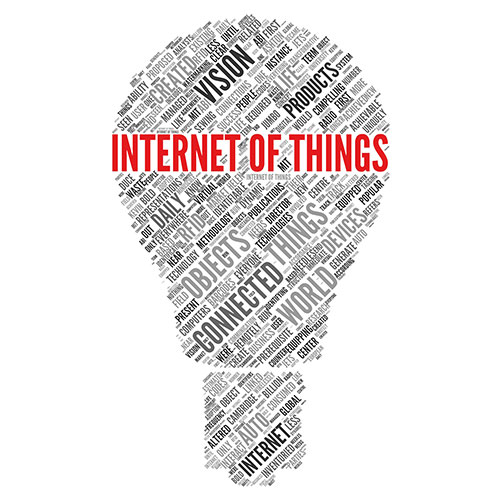 There is a lot of excitement about the rise of the Internet of Things (IoT). You can check the status of your home security from your phone, start your car, set the climate control with a smartphone app, and remotely open and close your garage from anywhere in the world. Why? Because the technology exists.
There is a lot of excitement about the rise of the Internet of Things (IoT). You can check the status of your home security from your phone, start your car, set the climate control with a smartphone app, and remotely open and close your garage from anywhere in the world. Why? Because the technology exists.
The next step in this IoT evolution is giving everything the ability to communicate. Your refrigerator will tell you when you're out of milk or anything else. Your home could also let the repairman know when something is wrong or if you need a new water filter. Your oven will send you a text when your food is cooked, and your dishwasher will text you when your dishes are clean. When David Petraeus was CIA Director, he mused that all of these devices will be a treasure trove of data.
You can already control your car by an app on your phone; you can control your door locks, turn on the air conditioning or heater before you get to your car, or maybe use it as a WiFi hot spot.
The global infrastructure will become the IoT when the roads, lights and vehicles have the ability to communicate. The idea is that roads can transmit traffic data to vehicles to control braking and acceleration while on the highway which will allow vehicles to drive closer together with less chance of accidents. This will be aided by vehicle-to-vehicle communication via wireless connection.
All of this is great in theory, but there are three main problems. One, when it comes to securing devices, ease-of-use always beats out security. Two, companies that are bringing IoT devices to market have little or no experience when it comes to securing those devices. And three, there is no governing body that is currently setting the standards for how these devices are to be secured.
A case in point: Every single router I have ever used has the default user name of "admin" and its password is "password." Honest. The default pairing code for a Bluetooth device is 0000. Once again, ease-of-use wins out over security. But, the scary thing is that there are hundreds of thousands of users who NEVER change these passwords. If network hardware manufacturers don't seem to want to change, what makes anyone think that IoT manufacturers are going to do so either?
Furthermore, most, if not all IoT devices will rely on WiFi to work. WiFi is easy to crack. All you have to do is Google how to do it, but here is a fairly good tutorial on YouTube.
For those who are really interested, there is a Linux OS called Kali Linux used for penetration testing, both offensive and defensive, built specially for hackers. It can crack into just about anything.
Anything that uses WiFi can be hacked. Remember the story of the father who went into his child's room and saw the camera moving back and forth and a voice coming out of the speaker? His router wasn't secured and neither was his IP camera. His IP camera also has security settings, but they were never touched. The website to find unsecured IP cameras is www.shodanhq.com.
Plug-and-play...ease-of-use vs. security. Ease-of-use wins out every time.
So, are you still excited about the rise of IoT? I know I'm not, and I know how to secure just about anything.
About the Author
Allan Pratt, an infosec strategist, represents the alignment of technology, marketing and management. With an MBA Degree and four CompTIA certs in computers, networks, servers and security, Pratt translates tech issues into everyday language that is easily understandable by all business units.